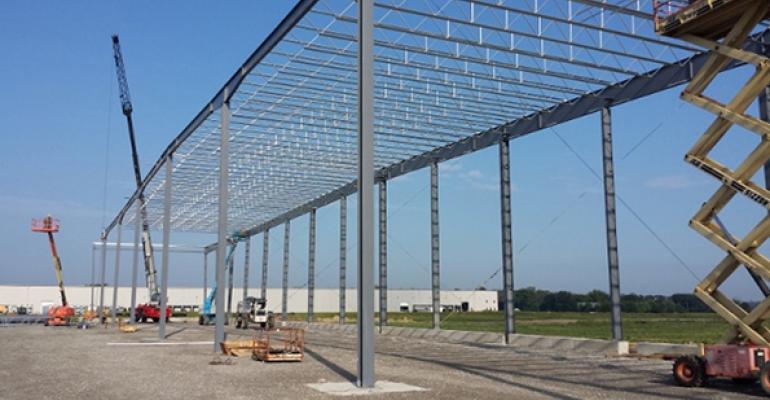Much the same way Miami has gained prominence from a cultural, culinary and tourism standpoint, the city has become a hotbed for industrial investment activity. The industrial real estate sector is now considered a top-tier U.S. market, alongside markets such as Los Angeles, New York/New Jersey, Chicago, Atlanta and Northern California.
The occupancy rate reached 96 percent in Miami-Dade in 2016, marking the highest rate in the area’s history. Over the past 24 months alone, over 7 million sq. ft. of industrial space has been absorbed in Miami-Dade. For reference, not long ago, anywhere from 500,000 sq. ft. to just over 1.0 million sq. ft. of absorption would have been considered a very good year for Miami.
Fueled by the region’s strategic position as a staging area for Latin America, the trend of new companies entering the market, a rising population and fast-changing consumer trends (such as online sales and the growth of subscription-based services), investment activity on the part of major institutional and local industrial developers and owners is reaching fever pitch across Miami.
South Florida gained close to 500,000 new residents in the past five years alone, and U.S. Census forecasts additional growth through the year 2020. As these new residents generate greater consumer demand, it’s driving the construction and occupancy of more warehouse space.
In an effort to compare apples to apples, JLL conducted an analysis taking an in-depth look at Miami and three similar major industrial markets: Seattle, Northern New Jersey—the nation’s top industrial market—and Oakland, Calif., since they all have diverse demand drivers, strong local consumption and are port-driven.
Here are the top four reasons why investors are betting big on Miami’s industrial real estate market and how it stacks up to these similar markets:
- Commerce and population growth are driving absorption: Miami has experienced significant population growth. By 2020, Miami’s metro population is expected to surpass 6.2 million people. This, coupled with the increasing popularity of e-commerce as retail sales in the region are up 4 percent year-over-year, has been the main driver of this strong performance and the most prominent force shaping future demand. Of the four major markets compared, Miami has experienced the highest industrial rent growth since 2010, with rental rates growing by 35 percent, followed by Northern New Jersey at 16.6 percent, Seattle at 2.3 percent and Oakland at 0.6 percent.
- Flood of institutional capital and favorable cap rates: New players are continuing to enter Miami’s industrial market and acknowledge its high performance, with institutional entities serving as the biggest net buyers of industrial space in the region. Miami recorded over $680 million in total sales volume in 2016. The Miami industrial market has experienced the highest cap rate sitting at 5.2 percent for class-A space, compared to Seattle and Oakland both at 4.8 percent, followed by Northern New Jersey at 4.7 percent. Those rates are being spurred by historically low vacancy rates, demand outpacing supply and resilient pricing.
- Miami is a front runner for new construction: The industrial stock has increased by more than 8.8 million sq. ft. in the last six years in the Miami market, increasing at an average of more than 1.2 million sq. ft. annually. Today, Miami has more new construction underway than the comparable markets of Northern New Jersey, Seattle and Oakland. The pipeline of new development is flowing with more than 4.1 million sq. ft. under construction, and an additional 14.2 million sq. ft. planned for future development. Considering the delivery of over 3 million sq. ft. of new industrial product in the first half of this year, the Miami-Dade market continues to experience robust positive absorption.
- Leases keep getting bigger: In previous real estate cycles, the Miami market saw primarily smaller industrial leases signed in comparison to larger leases. This time, the opposite is happening: 40,000 sq. ft. to 70,000 sq. ft. is now becoming the typical size of industrial leases inked in the region. In recent months, large users such as machinery manufacturer John Deere and Amazon have been expanding in the market. Another example is KLX Aerospace Solutions, which is expanding its distribution center and headquarters for a total of 500,000 sq. ft., and Telemundo Enterprises/NBC Universal’s world headquarters taking up 550,000 sq. ft. in Miami. These types of tenants were previously few and far between, but today they are responsible for the bulk of new absorption in the Miami-Dade market.
Across these major U.S. industrial markets under comparison, the fundamentals are equally strong. As people move into a community, there is greater need for more inventory and distribution channels. This activity also leads to job creation, and in Miami, the region’s manufacturing and logistics workforce has grown by approximately 5 percent since 2013, according to the Department of Labor.
Because consumers in today’s digital world are increasingly prioritizing delivery times when it comes to making purchasing decisions, online retailers and distributors are aggressively leasing warehouse space in these major markets in an effort to increase speed and efficiency.
For Miami, the forecast points to fundamentals remaining strong as the market enters the second half of the year. These include a nice mix of new construction, more net absorption and an increase in rental rates. In addition to this, vacancy rates in the prime submarkets such as Doral, Medley and Northeast and Central Miami-Dade are generally remaining under 5 percent.
When compared to markets with similar characteristics and barriers to entry like Northern New Jersey, Oakland or Seattle, it seems Miami’s industrial market has plenty of room for growth in value and rental rates.
Miami is attracting the industry’s leading developers, property owners and tenants—and it’s experiencing never-before-seen levels of investment in its logistics infrastructure. All of these factors bode well for the local real estate landscape and the region’s economy over the long term.
Brian Smith is a managing director at JLL and leads the industrial brokerage division in South Florida. He has completed industrial real estate transactions valued at more than $2 billion.

